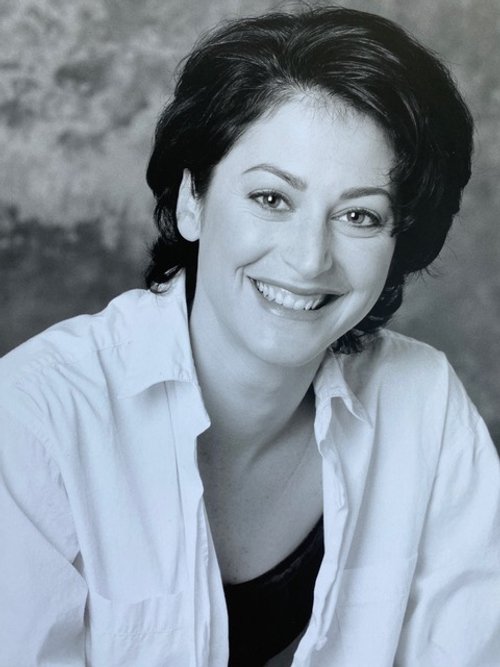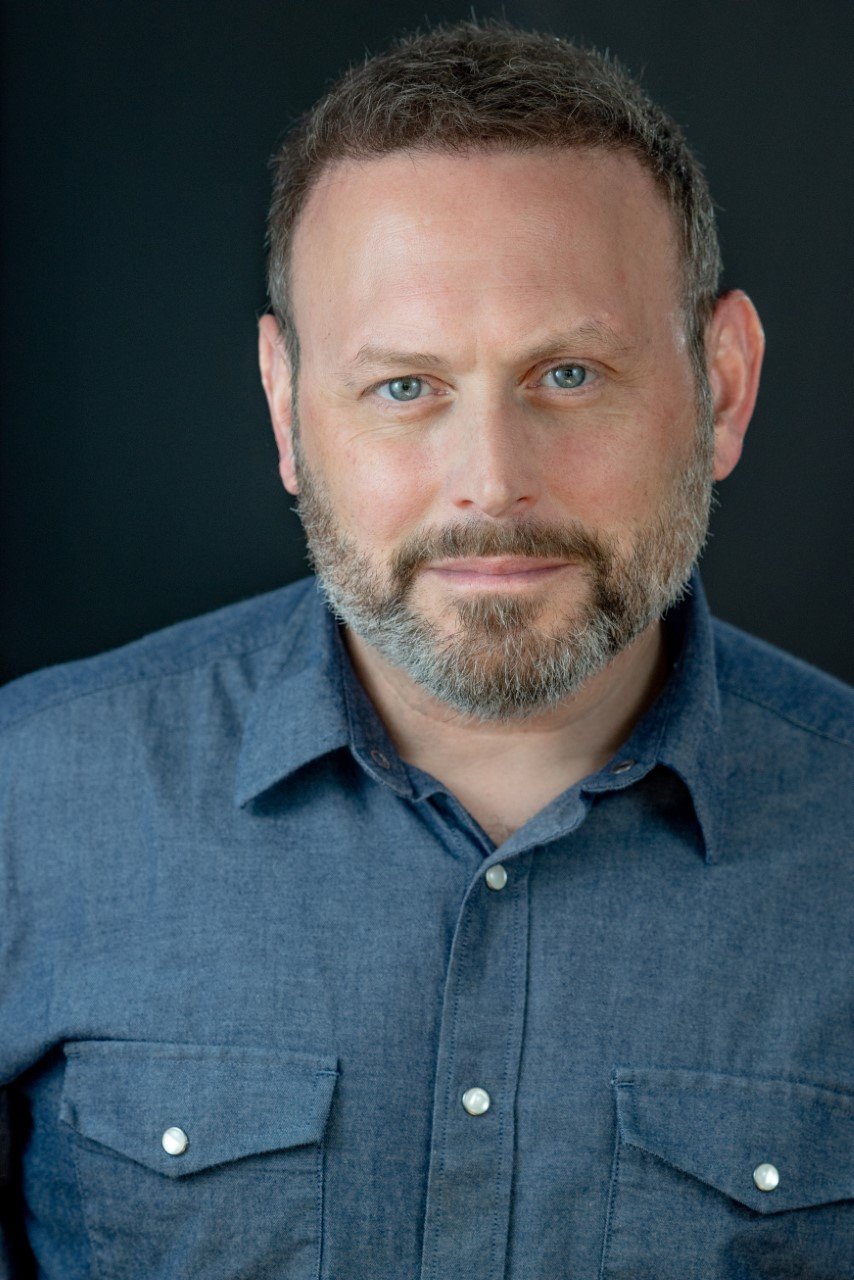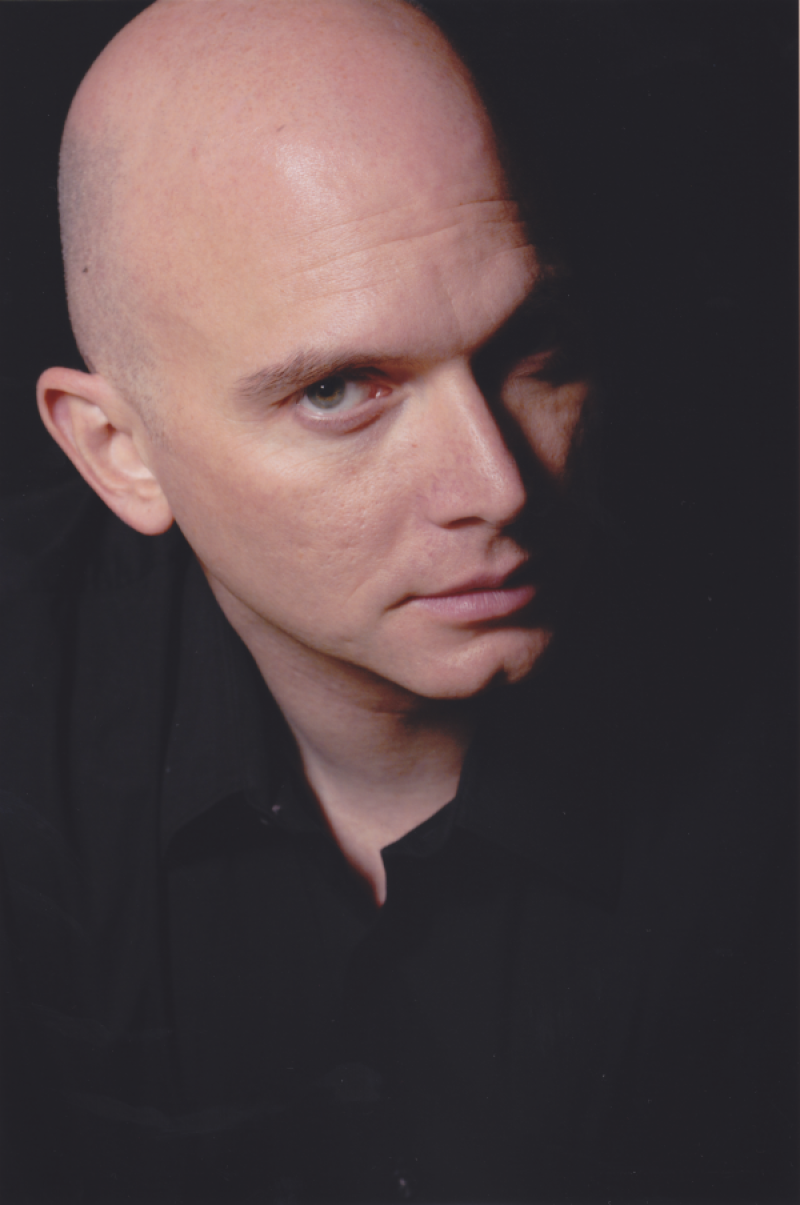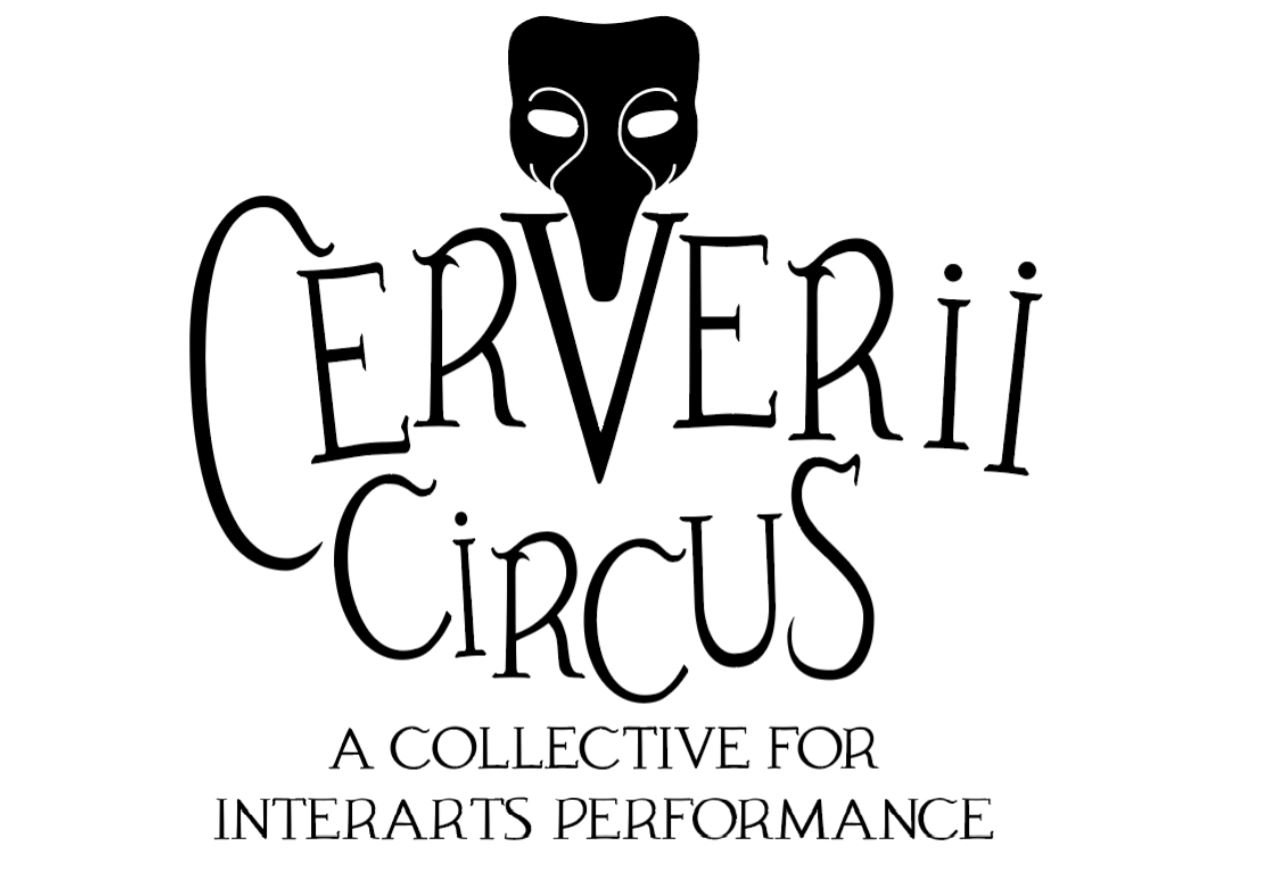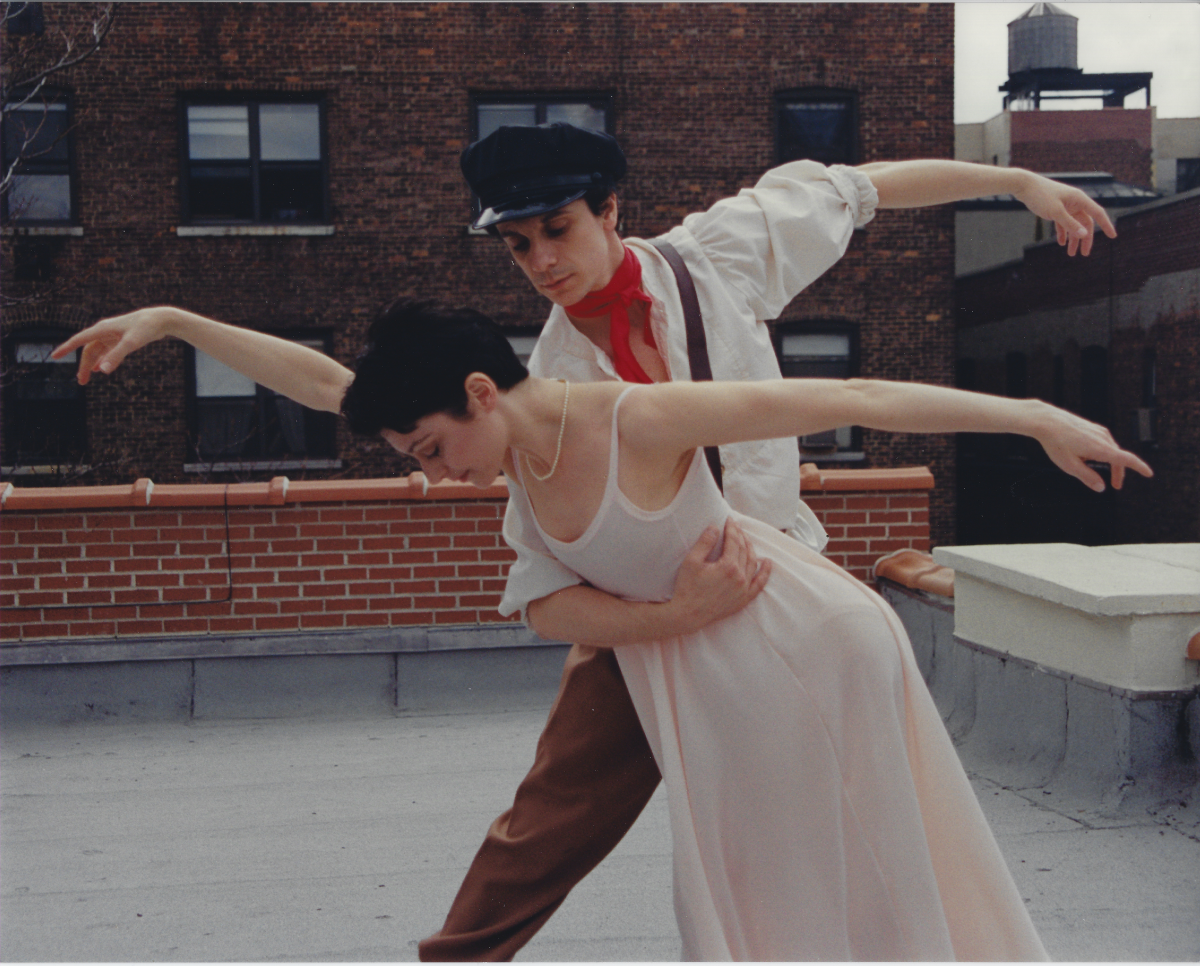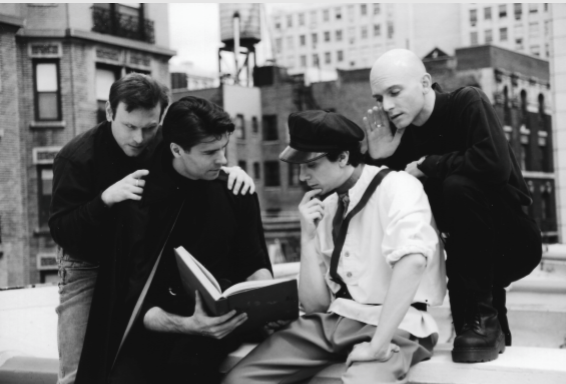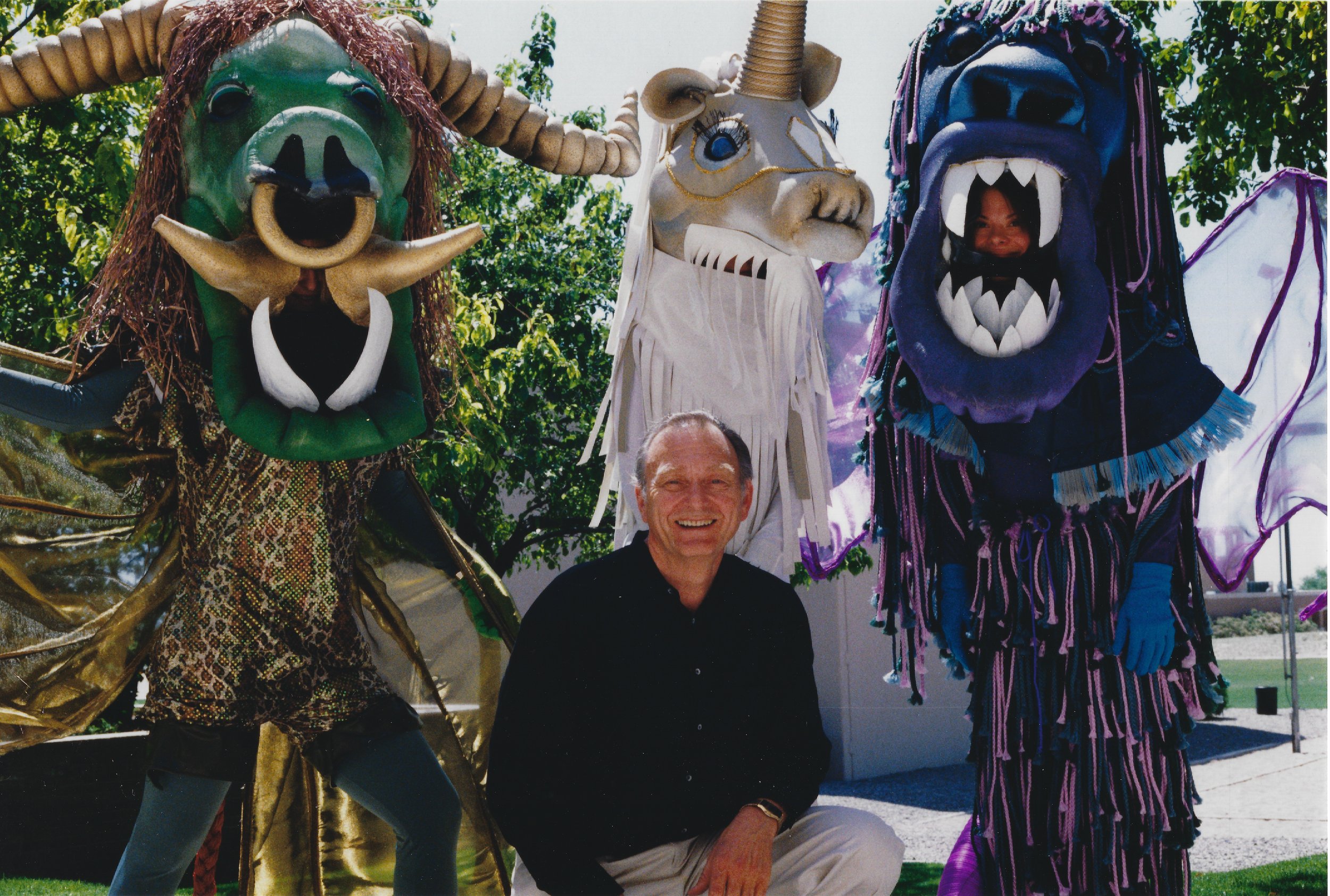Erik Satie and the Cerverii Circus
Gymnopedist by Luke Davis. Used with permission. Click to enlarge
Sometimes an event planned for The Sembrich comes about through sheer chance and circumstance. Such was the case with an upcoming program on composer Erik Satie, now in development.
During the summer of 2017, pianist Michael Cerveris happened to be visiting the Lake George area to see a Saturday night performance of the Adirondack Theatre Festival’s production of Knights of the Sales Office, which featured his son Todd in one of the principal roles. The following day, Michael paid a leisurely visit to The Sembrich studio, taking in the full tour of the museum and viewing the photos and memorabilia of Marcella Sembrich’s life and career. I invited Michael to try out Sembrich’s 1905 Steinway---and from that point forward, our conversation turned to some of Michael’s own ventures, including his interest in French composer Erik Satie and a particular project that he was in the process of creating with his production group, the Cerverii Circus.
By way of introduction, to both Erik Satie and the Cerverii Circus, let’s begin with this delightful video, featuring the Cerveris siblings Marisa, Todd and Michael reading excerpts from the children’s book Strange Mr. Satie by M.T. Anderson. An unseen but essential contributor to the proceedings: their father Michael Cerveris performing music of Satie on the audio track:
RICHARD WARGO: Welcome, Michael and thank you for joining us for this virtual introduction to Erik Satie and the Cerverii Circus! To begin, can you tell a little bit about the fine cast members of the video we just viewed, your children Marisa, Todd and Michael?
MICHAEL CERVERIS: Thank you Richard. It is a pleasure to be with you even virtually and speak about Erik Satie. But it is even a greater delight to talk about my children. (Am I forgiven for still mentioning them as ‘children?’) Although they have each sustained long careers in the arts, they are still ‘children’ to me. I feel particularly blessed with these wonderful people as friends and artists. As teenagers each chose to leave the nest early; Marisa to the North Carolina School of the Arts to study dance, Todd and Michael both tracked to Phillips Exeter and Yale University to study theater. Eventually, Marisa moving on to join the New York City Ballet (one of the last personally recruited by George Balanchine), and eventually to companies in Spain and France. Todd to Broadway in “South Pacific,”“Twentieth Century,”“A Man for All Seasons” Off Broadway and regional theaters, national tours of Broadway productions including “War Horse,” “A Few Good Men,” “Spring Awakening” and TV guest appearances in addition to writing and performing in two solo shows. Michael also to Broadway to create the title role in “The Who’s Tommy” and gaining Tony Awards for “Assassins” and “Fun Home” plus four more Tony nominations for other musicals including “Titanic” and the John Doyle production of “Sweeney Todd.” He has had a long association with Stephen Sondheim appearing in several productions all over the country; many TV productions and guest appearances. I am proud that they all have worked hard and have achieved success in very difficult career paths.
RW: Can you define the Cerverii Circus, what it is and how it came to be?
MC: I’m very fond of integrating the various arts disciplines and often find music, visuals, texts, and movements that when put together in unique ways add dimension to the ‘standard’ concert format. Well, early on in our family development I often involved the “kids” in these multi-media productions. And when I did summer Music Theater seasons as music director they often were part of the ensembles. Thus, we often spoke of ourselves like a band of travelling circus performers. But as time progressed, others entered the scene as needed. So, for example, when I created productions of Stravinsky’s “L’Histoire du Soldat” or Menotti’s “The Unicorn, the Gorgon and the Manticore” in various college locations of my teaching career, the ‘company’ expanded. So, now Cerverii Circus is something of a ‘moveable feast’ in that it grows and contracts as projects come and go and incorporate people in the same way. Presently, with the focus on a variety of Satie presentations the Circus has added a vocalist Daphne Alderson, a designer Joe Spinogatti, and social media director, Lauren McDaniel as well as area actors and dancers as needed.
RW: Marisa described Satie as “someone whose music has been integral in our family’s life.” Can you tell us something of your own background and how you came to the music of Satie?
MC: Well, I would say that my background is not very distinguished. My father was a member of the Pittsburgh Symphony as a flautist. I began piano lessons early and went on to the Juilliard School to major in piano. There I was privileged to study piano with Eduard Steuermann, long an associate of and recorder of all Arnold Schoenberg’s piano music. After Juilliard, I eventually went on to earn a Master’s Degree in Musicology and a DMA in Piano. I was also fortunate to study with Leon Fleischer as a special student early in his teaching career. As for Satie’s history with our family, it does go back a long way. My first contact with his music is without a doubt the same as most people the world over: listening to his “Gymnopedie.” In order to ease the expense of two lessons a week with my first teacher, I was given the job of cleaning her studio each week (a token ruse). Nevertheless, this also gave me access to her record collection as I supposedly “worked.” Thus, my first hearing of Satie was through an old 78 recording of Debussy’s orchestration of the two “Gymnopedie.” I never forgot the impact of that experience. Later on, it seemed very natural for me to focus my master’s research project on Satie and I penned “Erik Satie: The New Aesthetic” for my degree.
"What the Little Princess of the Tulips Says.” Crayon drawing for Satie’s piano pieces by the Cerveris children. Click to enlarge.
"War Song for the King of Beans." Crayon drawing for Satie’s piano pieces by the Cerveris children. Click to enlarge.
The Impressionists (1971), London Records release: John Kosh, design; Ethan A. Russell, photography. Click to enlarge
When I began to apply some of my research material to my piano recitals at various college teaching venues, my growing family became involved. Sometimes the children would be looking on at rehearsals, while their mother Marsha, a former dancer, served as a Harlequin figure of an early production that featured Satie’s “Jack In The Box.” And when I wanted to incorporate a visual element in presenting 12 of Satie’s pieces for children, it seemed natural to have Michael and Marisa provide the crayon drawings depicting each piece, which I still use today in presenting those pieces. Later on all three children were “engaged” to provide acting and movement when needed in the various pieces of Satie’s repertoire I performed. So, I think it is easy to see that Satie has been “intregral in our family’s life.”
RW: Your mention of “Gymnopedie” brings to mind my own introduction to the piece. As a kid, I signed up for the Columbia Record Club. One month, when I neglected to send back the members post card by the required date, a Phase 4 Stereo LP called “The Impressionists” conducted by Bernard Herrmann arrived as the LP of the Month. A happy mistake, since the record became a personal favorite and served as my introduction to the beautiful Debussy orchestration of the piece that you spoke of. But it wasn’t “The Impressionists” LP that introduced most folks from our generation to Erik Satie, it was this 1968 Grammy-award winning recording by Blood, Sweat and Tears:
Theophile Steinlen's poster art for Le Chat Noir (1896), a late nineteenth century entertainment establishment in Paris. Click to enlarge
RW: As for the vaguely Grecian-sounding title of the piece, I heard that, on one occasion, when Satie was asked what his occupation was, he replied "I am a gymnopedist.” A year later, he validated the profession by writing his "Trois Gymnopédies.” Is that correct?
MC: My understanding of this incident is a bit different. The idea of naming these pieces was in Satie’s head for some time. The theory is that the term comes in reference to ancient athletic dancing figures on a Greek urn. At an encounter at the Chat Noire where Satie was first introduced to Rodolphe Salis the owner and eventually a strong supporter of Satie, Vital Hocquet, an obscure plumber turned humorist and a Chat Noire regular announced his new friend as ‘Erik Satie, gymnopediste!’ Salis is said to have responded, ‘That is a most noble profession!’
RW: Let’s get a glimpse of Satie himself in this unusual footage from Rene Clair’s Entr’acte, filmed in 1924, a year before the composer’s death:
RW: Can you provide some insight into this footage?
Painter Francis Picabia
MC: This snippet is just a few seconds of the approximately 25 minute film that was the centerpiece of the Ballet “Relache” one of Satie’s last works and a collaboration with the painter Francis Picabia and the poet Blaise Cendrars, both close pals of Satie. Early film maker, Rene Clair was engaged to make the film for “Relache,” the inclusion of which is notable insofar as Satie was generally suspicious of technology; he refused to ever even use the “new-fangled” telephone. The images here are of Satie (in the bowler hat) and Picabia that serve to introduce the nonsense of the entire ballet. The action of the ballet and the film highlight the Dada influence on all these gentlemen. More specifically, the music Satie wrote for the film which is titled “Cinema” is an early example of scoring for movies which Satie did very meticulously, often coordinating frame by frame to the music, something taken for granted today but something unique at the time. Satie’s technique of cellular construction works well with the mash-up of images and non-sequiturs that populate the film and the ballet’s scenario which includes dolls with inflatable heads, animated matchsticks, a coconut balanced by a water spout, a ballet dancer seen from below through glass, etc. plus a funeral cortege that included a camel. We often use this film as a curtain raiser for our performances while the audience is coming in and getting seated.
RW: We’ll include a link to the full video of Entr’acte at the end of this post for those who want to explore the film further. Tell us, Michael, when did you envision the creation of a cabaret-style portrait of Satie? What forces and elements do you employ in the program?
Click to enlarge
MC: The idea of presenting some of Satie’s works as a cabaret really came after an original idea for a much larger and more theatrical exploration of this complex individual. I’ve been long impressed with collaborative works such as those by Robert Wilson and Phillip Glass including “Einstein On the Beach.”
Satie (1916) by Jean Cocteau.
My scenario, “Looking For Erik” follows a similar structure of ‘theater of images’ that portrays various aspects of Satie’s life set around specific works. A cast consisting of four actors giving voice to Satie’s own writings and that of his contemporaries, two singers for some of his vocal works and a solo dancer/mime who serves as Satie’s alter ego that takes the form of a Harlequin. Center stage is a concert grand piano from which most of the live music comes. This is all integrated with on-going images and works on a projection screen that include dance settings and other vocal settings. Since the venue for such an elaborate production obviously needs to be a fully functioning theater, the idea of field-testing some of the material on audiences in a smaller environment such as a cabaret seemed prudent. Which is really what we have been doing. With such a wealth of material that Satie provides, each presentation can be slightly different and tailored for specific purposes. For example, in inaugurating a particular space, or as a fund-raising event or, in your case, as authenticating the visionary aspect of Satie’s work along with others who cast long shadows. There is more than enough material to go around. The larger production still awaits the proper support.
RW: Tell us more about the media-design for this project. Do you use artwork from Satie’s time or do you incorporate contemporary elements as well?
One of the illustration by Charles Martin that served as inspiration for Satie's "Sports and Diversions." Click to enlarge.
MC: My intention of the media-design aspect for our piece is to incorporate it as its own through line in giving a portrait of Satie. Normally, we use a large projection screen. For The Sembrich it may be necessary to substitute a large TV screen. Our designer is equally adept at abstract and literal images. Thus, as mentioned above, the images used for Satie’s children’s pieces although clearly not contemporary, are pieces of original art work. The pictures used for the “Sports and Diversions” in our performance feature art nouveau paintings by an artist of the time, Charles Martin. These paintings were made specifically for an album to be published alongside the musical score; or more accurately the other way round. Satie wrote the music specifically for these paintings that were then organized by the publisher, Vogel. Actually, the painter made two versions over the course of four years. Satie used the earlier version.
RW: To initiate our discussion of Satie as a “visionary,” let’s start with a trio of video samples from a staging of your SATIE SOUVENIR. Here now are selections from Sports et divertissements, a set of twenty-one short piano pieces by Satie depicting various sporting and leisure activities, a project initiated by Parisian publisher Lucien Vogel in 1914:
RW: In just three brief clips, we can already begin to see how Satie, in his own unique way, managed to influence so many genres of expression in the twentieth century---from impressionism and absurdism to minimalism. Can you expound further on this notion of Satie as a “visionary?”
MC: I’ve often claimed that Satie was the most important footnote in music history. His harmonic language, formal principles, integration of high art and low with other arts forms and music of the streets and, above all, humor were forward thinking at the time. It was John Cage who said without Satie there would be no modern music. It’s not so much in the actual scores that he wrote but in the ideas behind them that had such forward looking impact. When Satie said, “…we must have music without sauerkraut,” he meant not just turning away from Wagner, but also turning away from all kinds of “clutter,” abandoning the pervasive Romanticism of his time and pointing the way towards neo-classicism. To try and find the essence, to pursue purity and integrity, all the while having to live in the world with all its complexities and contradictions was what one biographer Ornella Volta called Satie’s “ransom of the age.” This was the credo and irony and the mysticism of Satie; to say nothing of his sense of humor and satire. So, by presenting some of his works and ideas perhaps we can also get a sense of the sadness, which constantly nagged him as a result of the marginalizing of his work by critics and the public. Although he had spurts of public success, Satie lived most of his life in abject poverty. He died penniless thinking that he had no place in history. In many ways, the tumult of the time in which Satie lived is still with us today and I think there is still much to learn from him.
RW: As we close out this post with your whimsical “A Musician’s Day” video (text and music by Erik Satie and illustrations by Josefin Shon), are there any closing thoughts you’d like share with The Sembrich audience, on “A Musician’s Day” specifically or on Erik Satie in general?
MC: Well, I think I can guarantee that your audience will definitely hear “A Musician’s Day” spoken by ‘Satie himself’ at our performance. It’s a perfect example of the “twinkle” in Satie’s eye many of his friends often spoke of. Its endearing quality is what speaks to me of the nature of the man who was never afraid to tell the emperor that he had no clothes on. I am ever so grateful to you Richard and The Sembrich for allowing me to bring to the public my personal sense of who and what Satie was and is.
RW: Thank you, Michael! We look forward to a time, beyond coronavirus, when our stars once again align, when we can experience your fascinating exploration of the life and music of Erik Satie in the salon setting of The Sembrich studio. For now, we want to express our deep appreciation to you and your family members for your generous contribution to our 20/20: Virtual Visionaries series.
Listed below is a link to the complete short film Entr’acte by Rene Clair with a score by Erik Satie, widely regarded as a classic of avant-garde cinema:
Click here to view Entr'acte by Rene Clair.
On behalf of The Sembrich Board of Directors and staff, we’re pleased to acknowledge the generous sponsorship of this special four-part Alfred Z. Solomon Innovator Series by the Alfred Z. Solomon Charitable Trust. In addition to today’s post on Erik Satie, upcoming segments in the weeks ahead include chapters on visionaries Philip Glass and Igor Stravinsky. We conclude our series with a reflection upon the power of music to bring us together as a community, featuring a remote performance of Aaron Copland’s iconic Quiet City with trumpeter Chris Coletti, formerly of the Canadian Brass, and members of The Philadelphia Orchestra.
In closing, we want to relay our sincere thanks to painter and musician Luke Davis for generously allowing us to share his portrait of Erik Satie, "Gymnopédist,” at the top of this post.
Until next time,
Richard Wargo
Artistic Director


